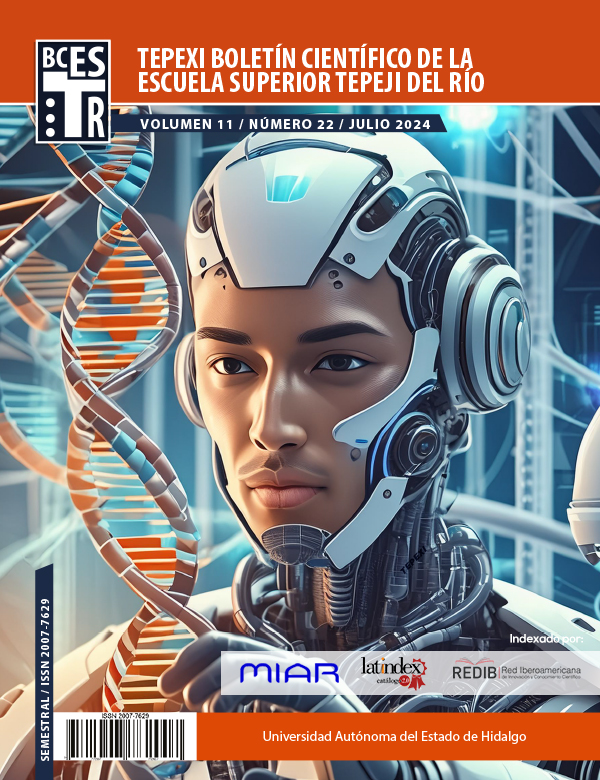Education as a determinant of health
Abstract
Education is currently defined not only as the learning-teaching process through the acquisition of knowledge, skills, and values but also as a key determining factor that influences the health of people throughout the development of their lives (WHO). The determinants of health are multidiverse within the bio-psycho-social context of a person and/or community from a perspective that goes beyond traditional medical care. Education is considered one of the most important social determinants of health, since it influences people's ability to access health information, adopt healthy lifestyles, make informed decisions about their well-being and access job and economic opportunities that impact their quality, style and standard of life. In Mexico, the importance of education in the health of the population has been investigated and analyzed in order to identify the possible causes and consequences of this relationship between education and health, where a close relationship has been observed between the educational level of the population and their state of health since people with higher levels of education tend to have better health and lower incidence and lower prevalence to develop chronic diseases, higher life expectancy and better quality of life in general. On the contrary, those with lower educational levels face greater challenges in terms of health and access to health services. Education as a determinant of health, influences multiple aspects. First, education provides people with the necessary tools to adopt healthy lifestyles, such as a balanced diet, regular exercise, and the prevention of risky behaviors. In addition, education favors informed health decision-making, allowing people to access truthful and up-to-date information about diseases, treatments, and preventive measures.
Downloads
References
CONEVAL. (2021). Nota técnica sobre el rezago educativo, 2018-2020. CONEVAL. Obtenido de: https://www.coneval.org.mx/Medicion/MP/Documents/MMP_2018_2020/Notas_pobreza_2020/Nota_tecnica_sobre_el_rezago%20educativo_2018_2020.pdf.
CPUM. Constitución política de los Estados Unidos Mexicanos (2015). Diario Oficial de la Federación. Recuperado de: http://www.diputados.gob.mx/LeyesBiblio/htlm/1.htm.
Diccionario Etimológico de Corominas. (2020). Etimelogía de Escuela. Obtenido de Escuela: https://etimologias.dechile.net/?escuela.
Educación y aprendizaje. (s. f.). UNICEF. obtenido de: https://www.unicef.org/mexico/educaci%C3%B3n-y-aprendizaje#:~:text=La%20educaci%C3%B3n%20es%20un%20derecho,y%20ejercer%20sus%20otros%20derechos.
El honorable Marc Lalonde. (s. f.). OPS/OMS | Organización Panamericana de la Salud.https://www.paho.org/es/heroes-salud-publica/honorable-marc-lalonde.
El trabajo de la UNESCO en el ámbito de la educación. (2023b, junio 29). UNESCO. https://www.unesco.org/es/education/action.
Gomez David, J.-P. J. (31 de Julio de 2020). Escuela Andulaza de Salud Publica, Consejería de Salud y Familias. Obtenido de La Educación, determinante de la salud afectado por el COVID-19 tomado de :https://www.easp.es/web/coronavirusysaludpublica/1259-2/.
INEE. (2018). La educación obligatoria en México. Informe 2018. Instituto Nacional para la Evaluación de la Educación. https://www.inee.edu.mx/wpcontent/uploads/2018/12/P1I243.pdf.
Instituto Nacional de Estadística, Geografía e Informática (INEGI). (2020). Caracteristicas educativas de la poblacion. Obtenida de: https://www.inegi.org.mx/temas/educacion/.
Instituto Nacional de Estadística, Geografía e Informática (INEGI). (07 de Diciembre de 2022). Encuesta Nacional sobre Acceso y Permanencia en la Educación (ENAPE, 2021). Obtenido de Educación y permanencia en México: https://www.inegi.org.mx/rnm/index.php/catalog/832.
Instituto Nacional de Salud Pública. Conceptos fundamentales de la salud pública: Julio Frenk. (26 de agosto del 2020). https://www.insp.mx/avisos/4515-salud-publica-conceptos-juliofrenk.html.
Lima. J. J. Determinantes del rezago educativo en México, 2018 y 2020. (Tesis) Universidad Nacional Autónoma de México.
Metas ODS residuos. (2015).: mma.gob.cl/residuos/.
México. LGE. Ley general de la educación (11 de septiembre de 2013). Diario Oficial de la Federación.
México - Encuesta Nacional sobre Acceso y Permanencia en la Educación (ENAPE) 2021. (2022, 7 diciembre). Obtenido de https://www.inegi.org.mx/rnm/index.php/catalog/832
Organización de para la Cooperación y Desarrollo Económico (OCED). Oecd.org. Recuperado el 12 de abril de 2024, de https://www.oecd.org/sdd/labour-stats/labour-market-situation-oecd-updated-october-2023.htm.
Real Academia de la Lengua Española. (2014). Real Academia de la Lengua Española. Obtenido de Educación: https://dle.rae.es/educación.
Real Academia de la Lengua Española. (2014). Real Academia de la Lengua Española. Obtenido de Escuela: https://dle.rae.es/escuela.
Tovar, L. (2001). La Escuela, El Ambiente y La Salud (Una Propuesta de Orientación Metodológica para los Docentes. http://ve.scielo.org/scielo.php?script=sci_arttext&pid=S0798-04692001000200005.
UNDP. (2022). Programa de las Naciones Unidad para el Desarrollo. Obtenido de COVID 19 y educación en México: primeras aproximaciones de una desigualdad agudizada: https://www.undp.org/es/mexico.
UNESCO. (2016). UNESDOC. Obtenido de Educación 2030: Declaración de Incheon y Marco de Acción para la realización del Objetivo de Desarrollo Sostenible 4: Garantizar una educación inclusiva y equitativa de calidad y promover oportunidades de aprendizaje permanente para todos: https://unesdoc.unesco.org/ark:/48223/pf0000245656_spa.
Copyright (c) 2024 Reyna Felipa García Cruz, Malinalxochitl Hernandez Del Angel , Demetrio Joshebeth Lopez Pacheco, Adán Pineda Figueroa

This work is licensed under a Creative Commons Attribution-NonCommercial-NoDerivatives 4.0 International License.











